Your cart is currently empty!
Sui Dynasty–the often forgotten predecessor of Tang
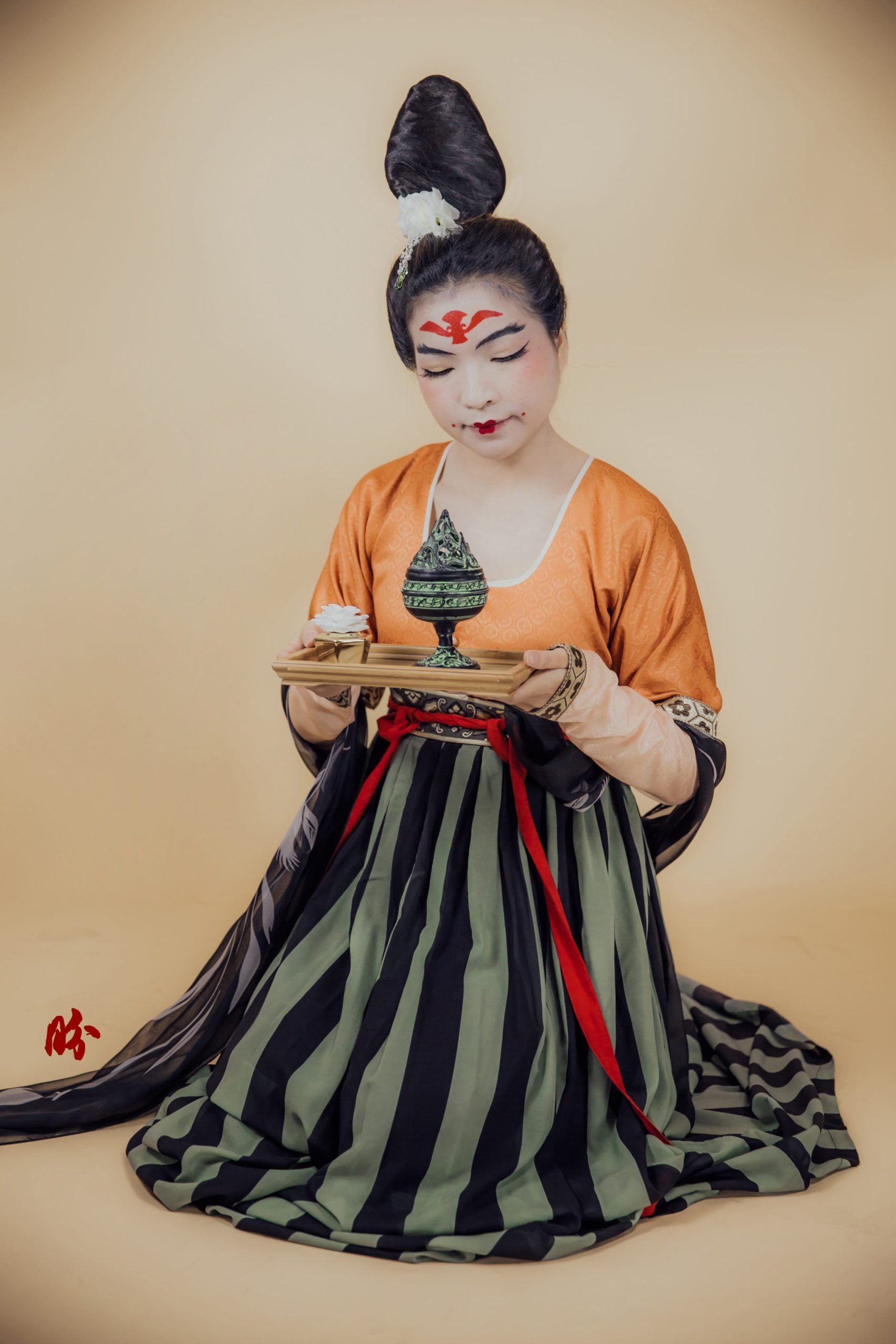
So everyone knows about the Tang dynasty, but not many knows about Sui, which lasted a miserly 37 years (3 emperors, 581–618 CE). It is very similar to the fate of Qin dynasty (aka first dynasty of imperial China) which lasted only 15 years.
There’s an interesting pattern for rulers who managed to conquer and ‘unite’ war-torn states to have succession issues in history of China. It’s something I don’t have time to investigate into at this point, but even for the case of Mongol rule of Yuan dynasty, that didn’t last too long.
So war history is not my forte, I’ll come back to the topic of fashion. I’m going to lump Sui Dynasty with early Tang dynasty, and talk about the infusion of Hu fashion (nomadic tribes) into Han Chinese culture.
Both Sui and Tang rulers were mix blood of Hu people (nomadic tribes–Central Asia) and Han Chinese. Although they were schooled in Han Chinese language, they did not shy away from their mixed parentage as well. Both Sui and Tang embraced external cultures, and actively adopted Hu dressing, and you could see a clear departure from the rest of the Han Chinese aesthetics during this period.
For a start, sleeves became really narrow and tight, which is a huge departure from the era just before with their extremely loose and flowy sleeves and tops. The nomadic tribes wore clothes rather different in style from the Central Han Chinese due to their lifestyle. They needed to wear things that enables them with greater mobility. In fact, it was the nomadic tribes that first introduced Han Chinese to the wearing of pants back in the Warring States era (just before Qin Dynasty).
There’s a particular style during the early Tang period, where women would wear two layers of top–one with a long sleeve, and another with a shorter sleeve and both were round collar. The skirt was fastened to the chest level, or if one was wearing this style, it would be fastened at the just below the chest level (not on the waist).
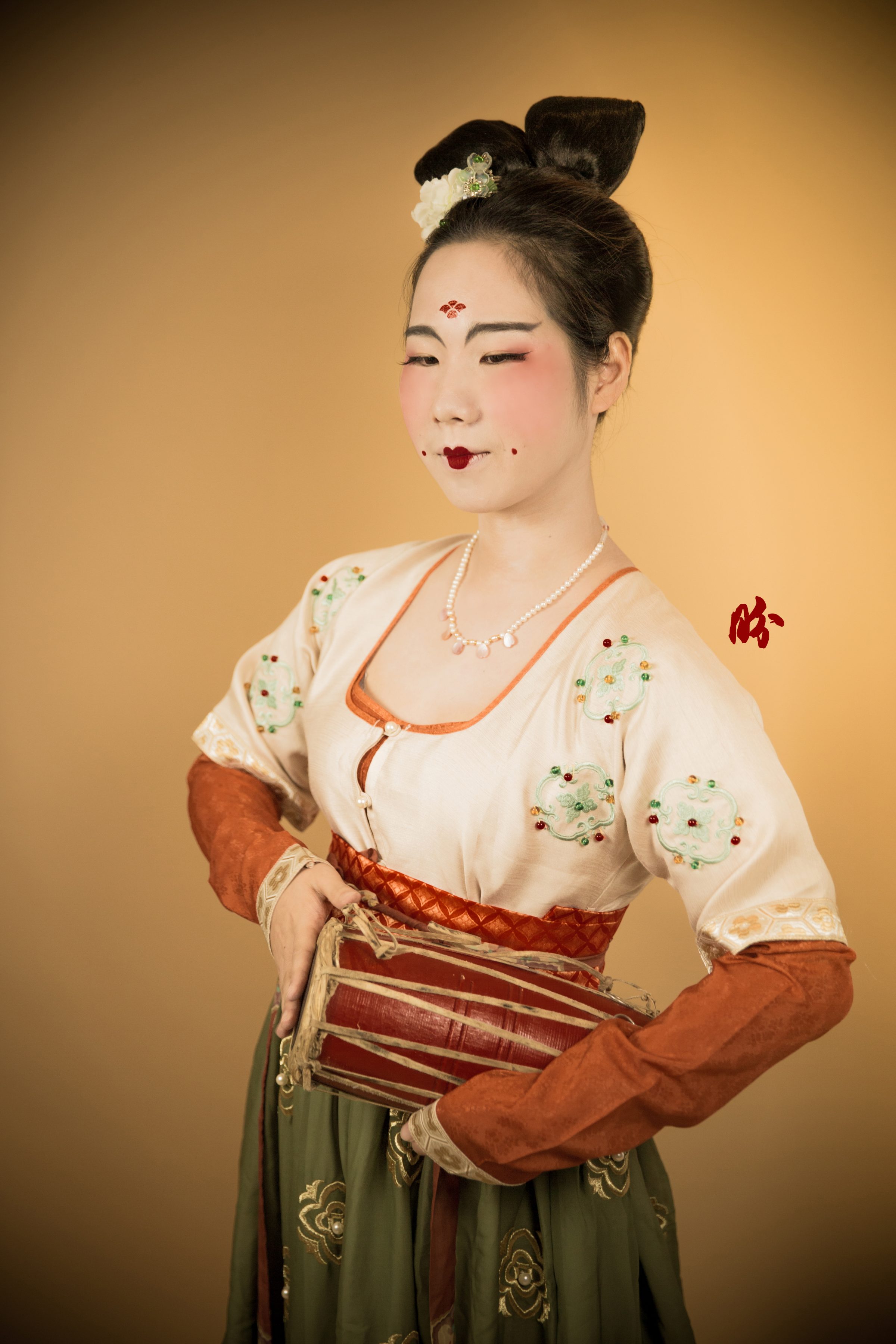
In case a little bit of authenticity check is needed, I’ve made a picture collage to show you the inspiration that I took for these styles and pictures.
People always thought that the pattern on the forehead’s too exaggerated. But the truth is, everyone’s been deceived by TV shows’ small red dot on the forehead. There are plenty of artefacts from Xin Jiang that showed the red marks on the forehead to be larger than life. But of course, it’s like when everyone does our own make-up, we are pretty much left to our own devices to doll ourselves up the way we want to, so there’s really no fixed rule as to whether one MUST have the red dot, and how big they should be.
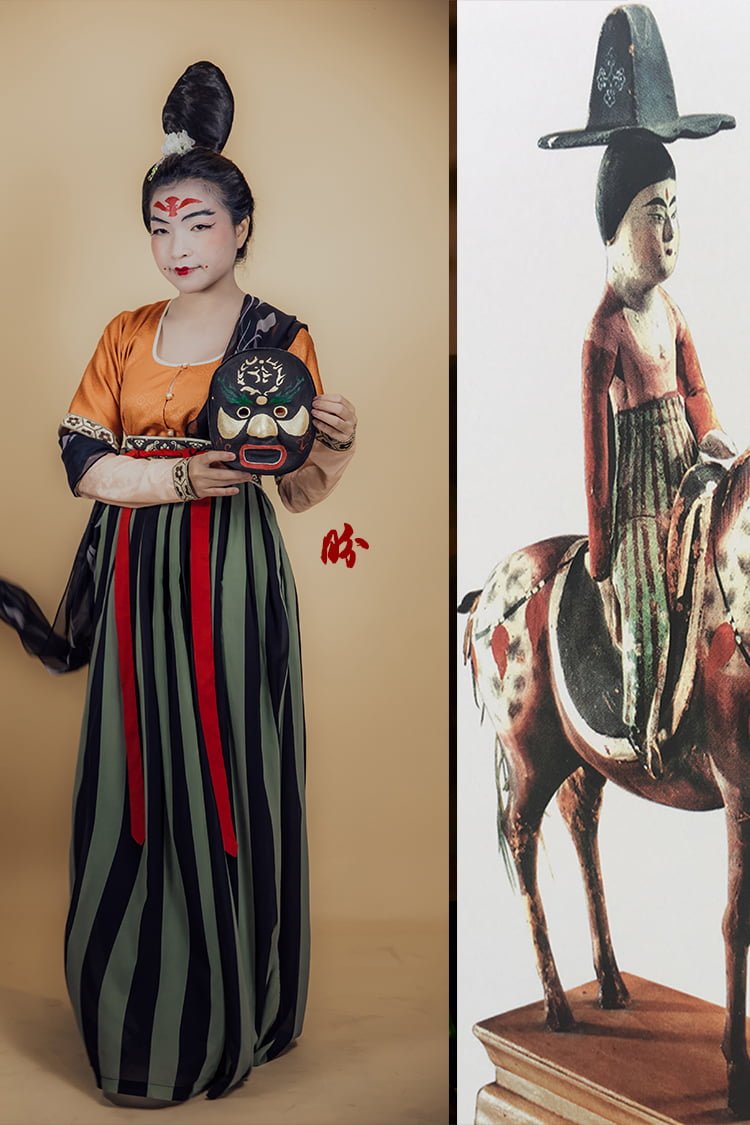
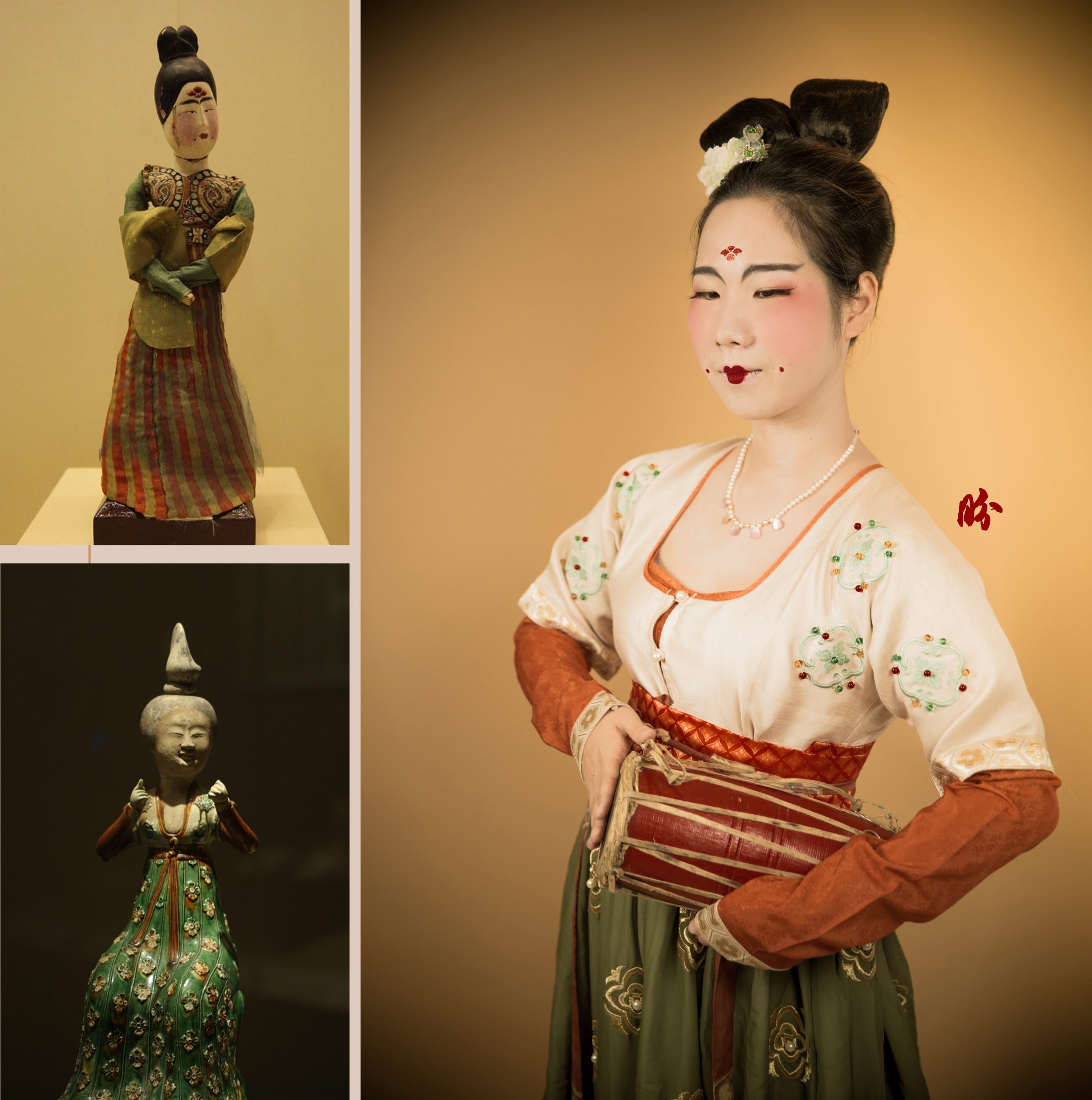 By now you would’ve realised that the Tang period women have really odd eyebrows. Unlike any other periods throughout Chinese history, the Tang women were the ONLY ones who liked thick and short eyebrows…. Everyone else liked thin long eyebrows. Pretty much like how women from the older generation would tattoo their brows thin and long–must be inspired by ancient beauty standards. And now, people are going for thicker brows (fashion is cyclical). But I doubt that thick and short brows would reach their full glory as they once did in Tang dynasty. I’ll share more in later post on the other types of brows.
By now you would’ve realised that the Tang period women have really odd eyebrows. Unlike any other periods throughout Chinese history, the Tang women were the ONLY ones who liked thick and short eyebrows…. Everyone else liked thin long eyebrows. Pretty much like how women from the older generation would tattoo their brows thin and long–must be inspired by ancient beauty standards. And now, people are going for thicker brows (fashion is cyclical). But I doubt that thick and short brows would reach their full glory as they once did in Tang dynasty. I’ll share more in later post on the other types of brows.
The Sui and early Tang styles were generally simpler, and their hair were all neatly tied up with a tall hairbun on top. Women during this period, were not yet adored for their full body. Instead, they were admired for having strong and healthy body (somewhat different from the other dynasties where being slim and slender was the definition of beauty). It is likely to do with, again, their strong nomadic influence of horse-riding and other more outdoor activities.
So we’ve seen plenty of striped pants these days, well, sorry ladies, the Tang women have beat us again in our game. They have been wearing stripes since the 7th Century!! And yes, it was very fashionable then. Must be the slimming effect, or maybe they were into optical illusions too.. 😛
And the hat they were wearing, it looks like what one’d see in those period drama, worn by assassins or women of mysterious background possessing extremely powerful kung-fu skills. Well, they were said to be influenced by the Persians and started its presence in China during Sui dynasty. The length of the cloth covering the face and body got shorter and shorter as Tang dynasty went by. It was originally used for elite women to cover their face when they go horse riding outside–partly to protect their modesty, and partly to protect them from the sand and dust. Eventually as women became more empowered (and likely less sporty), the hat became redundant.
I honestly feel that my Tang dynasty models were en pointe with their looks.
OK, another post, another day.
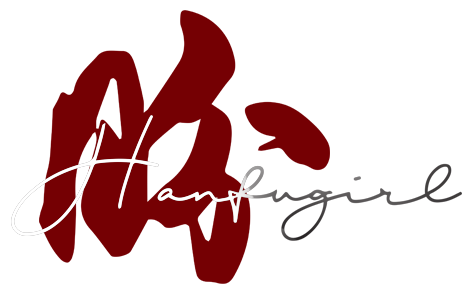
Leave a Reply